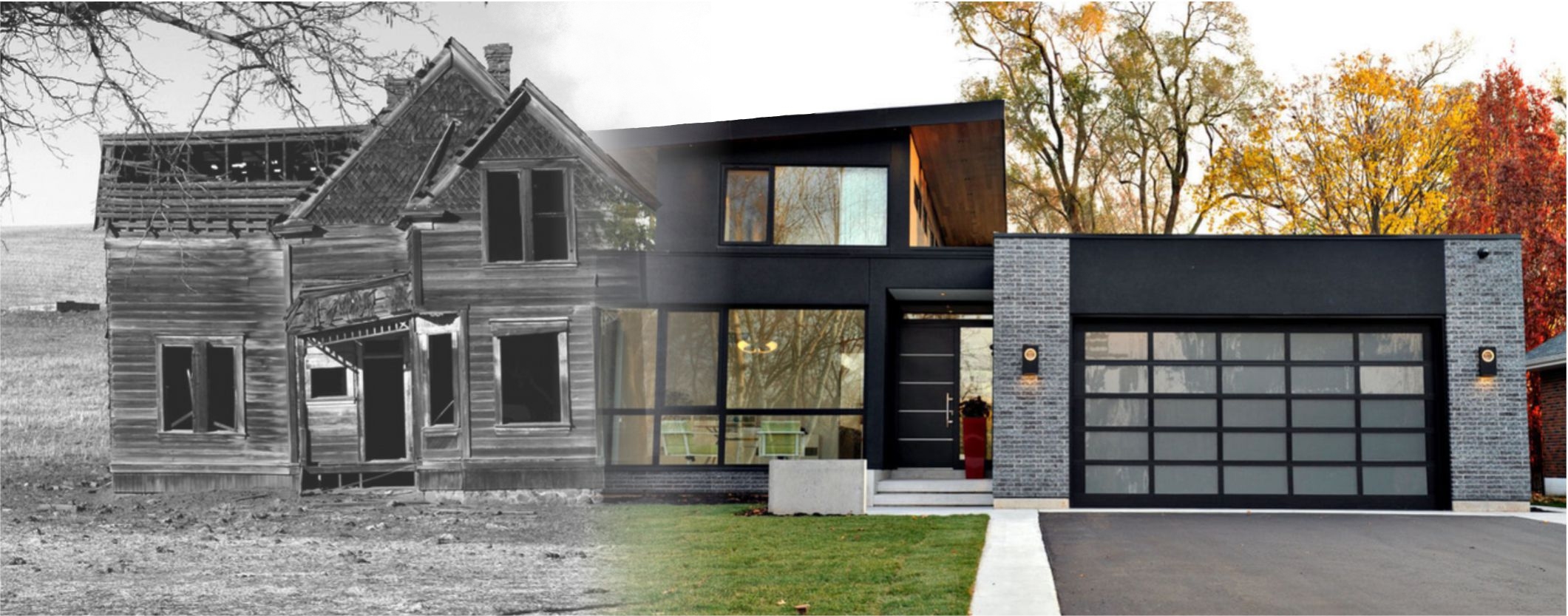
From Homesteads to Total Home Control: an intro to building science
This article is from a friend and fellow home builder who shares the same expectations as myself and explains it so well....
It’s so darn complicated to build a house today. We all just want a place to live that is comfortable, healthy, and durable. But something has become really hard about this.
In our view, it’s all about expectations.
Behind the simple words, “comfortable”, “healthy”, and “durable” can be very high homeowner expectations and meeting these expectations usually means integrating the cutting edge science, design, products, and materials. The best homebuilders don’t just pound nails anymore, they have become students of Building Science.
Think about shelter, the basic need a home meets. People have needed shelter forever. Literally since cavemen moved out of caves we humans have needed to control our indoor environment to protect us from ‘the outside’. Why is there still so much discussion over how to build a comfortable, durable home? Why is there so much discussion and debate around building science and revisiting best building practices? The answer is: because of homeowner expectations.
Homeowner expectations have evolved tremendously over time and these increased expectations drive the necessity for better building science and better building practices. Consider this, settler’s cabins worked just fine for families in their days. Expectations were pretty low. The homeowners were happy if the cabin kept out wild animals, provided basic warmth with a wood stove in the winter, shade from the sun in the summer and protection from the occasional storms. If you got cold it was acceptable to bundle up in sweaters and hats, if you got hot it was acceptable to open all the windows and doors and when it got dark it was acceptable to light the oil burning lamps. Indoor air quality from the fireplace and oil lamp smoke wasn’t an issue because the cabin was so drafty it aired right out. Similarly, mold and mildew in the walls wasn’t an issue because of the draftiness of the homes. Expectations were low because the homeowner was comparing it to the next best option - maybe a tent or temporary shelter. The systems were simple, and not everyone was aware of the cutting edge technology being used in a big city back east, people were thankful for the shelter they had. People just did what worked and that’s how it went – for a long time.
But slowly over time homeowner expectations increased. Jump to today’s homeowners. People expect total control of our indoor environment. People expect their homes to seamlessly maintain 72 degrees year around, provide fresh, healthy air to breath that’s not too dry, too humid and doesn’t expose them to pollutants, allergens or forest fire smoke. And while delivering these high levels of expectations, they don’t want the cost of the home or the cost of operating it to break the bank or wreck the environment by wasting resources or producing a huge carbon footprint.
Turns out, this is a big ask and there’s no ‘one size fits all’ solution. It requires on-going building science research and application of better building practices. Meeting these high expectations also involves the education and commitment of the entire real estate industry from builders and homeowners to realtors and financial institutions. Those committed to meeting today’s homeowners’ expectations, the designers, architects, builders and suppliers driven by building science and best practices, have a solid understanding of the physics at work in today’s advanced homes and the principles required to effectively create comfortable, healthy, durable and efficient homes.
The real-world details required to implement the principles and the application of those details are still evolving, however, we do know that we need to start by controlling the indoor environment the very best we can. This is achieved with durable, insulated, air sealed walls that effectively manage moisture relative to the local climate. Then it’s critical to right-sizing efficient heating, cooling and ventilation systems. By applying these principles, today’s homeowners can realistically shelter in a comfortable, healthy, long-lasting home that is affordable to purchase and affordable to operate. It will also use resources wisely and minimize their environmental impact now and for generations to come.
To be competitive in construction and homebuilding in today’s hyper-competitive environment where customer expectations are extremely high and customer tastes are well educated (be it through Pinterest, instagram, or Chip and Johanna Gaines) builders need to stay up to speed on the cutting edge of building science. There’s no silver bullet, but for me it is a mindset of staying inquisitive, idealistic, and pragmatic. Staying inquisitive means reading articles, watching webinars, reading lots of articles, listening to lots of podcasts, and attending conferences with industry experts and thought leaders - essentially doing things not every homebuilder does. Being idealistic and being pragmatic are sometimes on opposite sides of the spectrum, for me I try to think idealistically and refuse to settle for ‘the way it is’ while at the end of the day acting pragmatically on what makes sense given the resources, technology, and budget available.
As a general contractor, our company works hard to bridge the gap between today’s homeowner’s expectations, the best building theories, and the daily realities in the field. It’s not always the quickest and easiest way to build but in the long run it delivers the best product to our clients. A simple rule we follow is to always deliver work we are proud of - in the end this creates the ultimate competitive advantage.
Article Courtesy of Peter Grube

